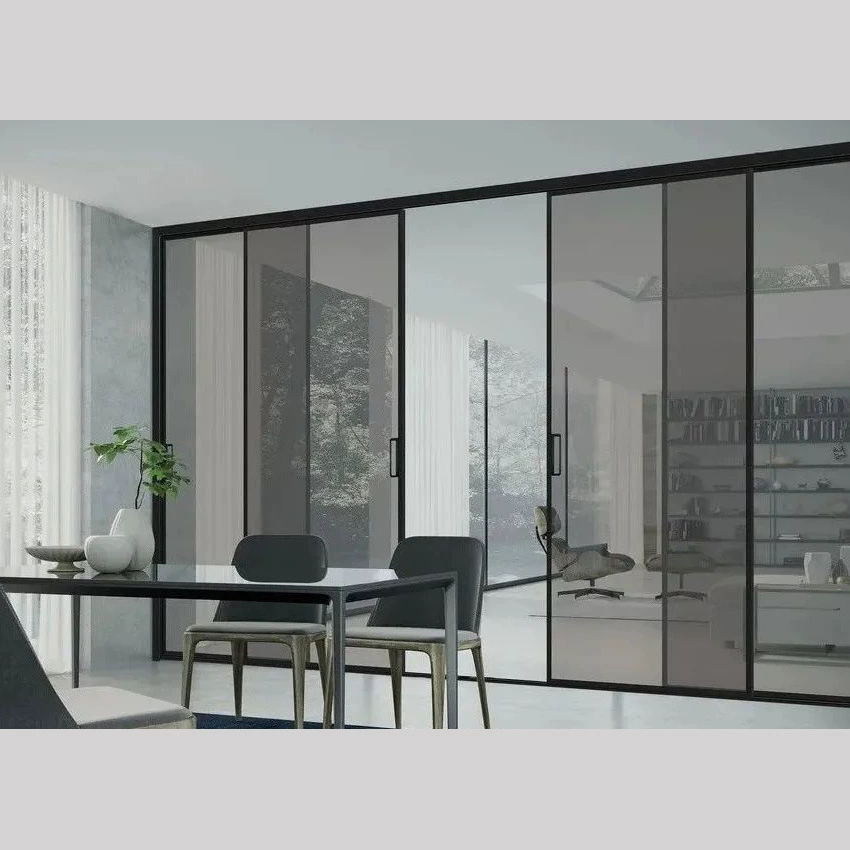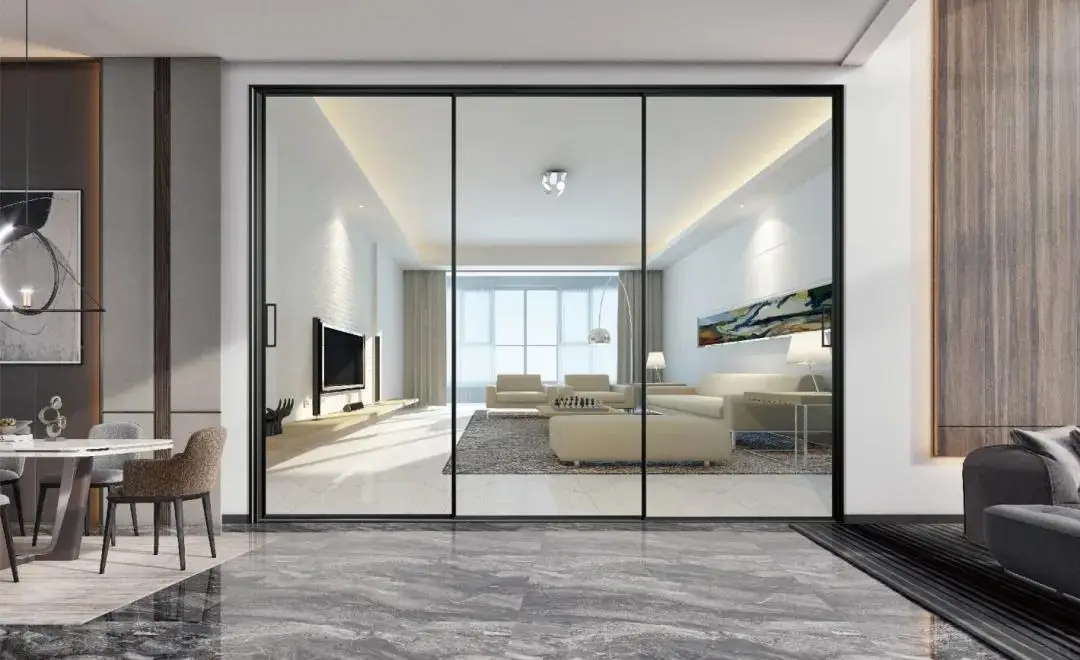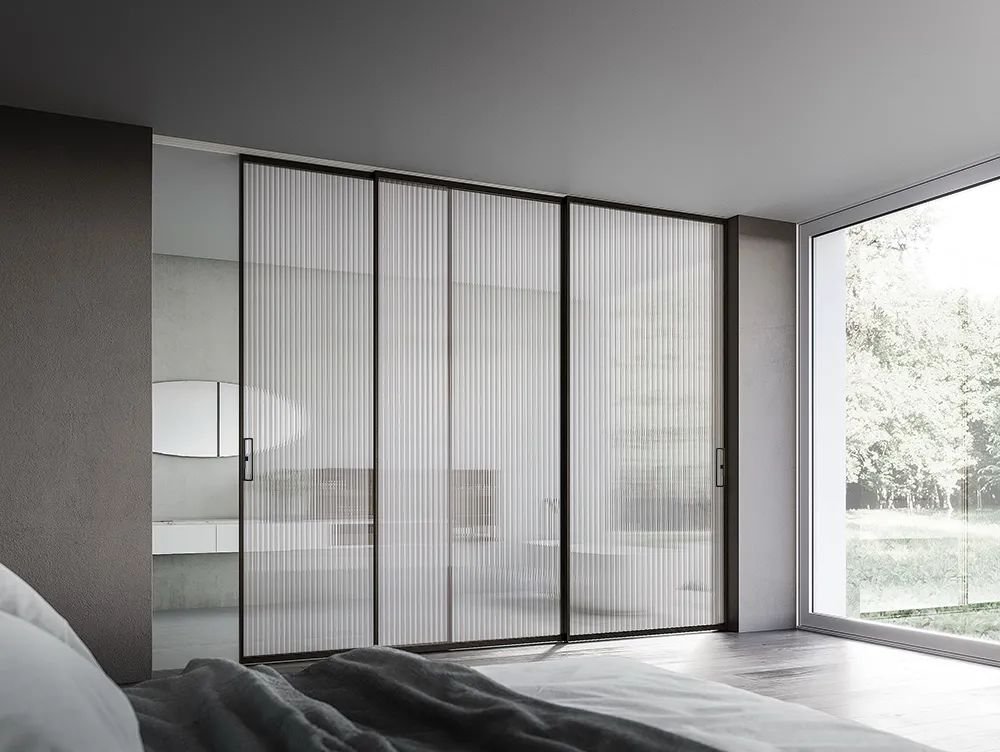Struggling with noisy, jarring sliding doors or furniture? This friction damages products and your brand’s reputation. Silent pulleys provide the smooth, quiet operation your customers expect and demand.
Silent pulleys are essential components used to enable smooth, quiet, and effortless movement for a wide range of objects. They are found in sliding doors, wardrobe systems, cabinets, office furniture, and medical equipment, reducing friction and noise for a better user experience and increased durability.

I’ve spent my career manufacturing hardware, and I’ve seen how one small component can make or break a final product. A high-quality silent pulley is more than just a wheel; it’s the key to perceived quality. Your customers feel it every time they open a door or a drawer. But their use goes far beyond just one application. Understanding the full range of uses is critical for any purchaser, like my friend joy in The United Arab Emirates, who needs to source the best components for his projects. Let’s look closer at what these pulleys can do.
What are the five main uses of a pulley?
Thinking that pulleys are only for lifting heavy weights? This narrow view can limit your design potential. You might be missing out on key applications for furniture and doors.
The five primary uses for pulleys are: lifting heavy loads with less effort, changing the direction of force, enabling smooth linear motion, creating mechanical advantage in systems, and transmitting power between shafts. These functions are fundamental in both simple devices and complex machinery.

In my factory, we see these five principles in action every single day. They are not just academic concepts; they are the foundation of good hardware design. For a purchasing manager, knowing these uses helps you specify the exact hardware you need for a particular function, ensuring you don’t over-engineer or under-deliver. It’s about matching the component’s purpose to the product’s goal. A simple cabinet door doesn’t need a heavy-lifting system, but a large partition door certainly does. Understanding these core uses helps you make smarter, more cost-effective purchasing decisions. It all comes down to applying the right tool for the right job, and pulleys are incredibly versatile tools.
A Deeper Look at Pulley Applications
| Use Case | Description | Common Opensliding Product Application |
|---|---|---|
| Lifting Loads1 | Makes it easier to lift heavy objects. A single pulley can halve the effort needed. | Heavy-duty lifting wheels for large glass partitions or industrial barn doors. |
| Changing Force Direction | Allows you to pull down to lift something up, which is often safer and more ergonomic. | Simple rollers in a top-hung sliding door system. |
| Enabling Linear Motion | Reduces friction so objects can slide smoothly along a track. This is the core use in our industry. | Wardrobe sliding wheels, drawer slides, and cabinet door roller systems. |
| Mechanical Advantage2 | Combining multiple pulleys to drastically reduce the force needed to move very heavy objects. | Linkage door systems that move multiple panels simultaneously with minimal effort. |
| Power Transmission | Used in machinery to transfer rotational motion from one part to another. | While less common in our direct products, the principle is used in the machinery that makes them. |
Where are pulleys used in real life?
Do you ever stop to think about where these simple machines are hiding? You probably use them every day without realizing it, and overlooking them means you miss their importance.
In real life, pulleys are everywhere. You can find them in sliding glass doors, wardrobe systems, office chairs, window blinds, gym equipment, construction cranes, and even flagpoles. They make everyday tasks that involve moving objects significantly easier and smoother.

When I talk to clients, from door factory purchasers to construction contractors, I emphasize that the quality of their final product often rests on these unseen components. A high-end sliding partition that grinds and sticks is a failure, no matter how good the glass or wood is. The silent pulley is the hero. For example, a furniture factory making cabinets needs a different type of pulley than a window factory. This is why we have such a diverse product line, from cabinet rollers to heavy-duty partition wheels. As a buyer, it’s vital to consider the specific real-world stress the pulley will face. This includes the weight it must carry and the environment it will be in. This ensures you choose a product that will perform reliably for years.
Practical Applications You See Daily
- Residential Homes: This is our biggest market. Silent pulleys are the heart of modern Partition Room Sliding Door Systems3 and Wardrobe Sliding Wheels Systems4. They allow large, heavy doors to glide open with a single finger. They are also in drawer slides and folding door systems, making homes more functional and feeling more luxurious.
- Commercial Buildings: In offices, you see them in the height adjustment of chairs and in large conference room dividers. Retail stores use them for display cabinets and changing room doors. We supply many contractors who build these spaces.
- Specialized Equipment: Think about hospital beds that adjust, or the smooth movement of carts in a warehouse. These applications often require very specific types of pulleys, like our universal pulleys that can rotate 360 degrees, to handle movement in multiple directions.
What is the purpose of pulleys?
Do you believe pulleys are just about moving things from one place to another? That’s only a small part of their function. Understanding their real purpose helps you choose better hardware.
The main purpose of a pulley is to reduce the amount of force (effort) needed to move an object and/or to change the direction of that force. They achieve this by distributing weight and minimizing friction, making work easier and more efficient.

This is where engineering meets practical application. For a buyer like Joy, this is crucial information. When you request a quote, you’re not just buying a wheel; you’re buying a specific mechanical advantage. For a heavy glass door, you need a pulley system designed to reduce effort. For a simple wardrobe door, the main purpose is changing direction and ensuring smooth travel. This is also where load calculation becomes critical. I always advise my clients to estimate the total weight of what they need to move. A key rule is that when using a four-wheel system, you should calculate the required load capacity based on only three wheels bearing the weight. This provides a safety margin and accounts for uneven floors, ensuring the system never fails under stress.
Core Functions Breakdown
| Purpose | How It Works | Why It Matters for a Buyer |
|---|---|---|
| Reduce Effort5 | A movable or compound pulley system distributes the load across multiple sections of the rope or track, effectively multiplying your force. | For heavy applications like industrial doors or large glass panels, this is the primary goal. You need pulleys with a high load rating and low-friction bearings. |
| Change Force Direction | A fixed pulley lets you pull down to lift something up, or pull sideways to move something horizontally. The effort required remains the same. | This is essential for user convenience and safety. It’s the key principle in standard sliding doors, barn doors, and window blind systems. |
| Enable Smooth Motion6 | The wheel itself, rotating on an axle, dramatically reduces the friction between a moving object and its stationary track. | This is the "silent" part of a silent pulley. The quality of the material (like nylon or polyurethane) and the bearings determine how smooth and quiet the operation is. This is a key quality indicator for the end-user. |
What are the three kinds of pulleys used in our everyday life?
Feeling overwhelmed by all the different pulley options? Choosing the wrong type can lead to system failure, high costs, and unhappy customers. Let me break down the three basic types.
The three fundamental kinds of pulleys are fixed, movable, and compound (a combination of the two). A fixed pulley is anchored in place, a movable pulley moves with the load, and a compound system uses both to provide a significant mechanical advantage.

Understanding these three categories simplifies things greatly. In my factory, most of what we produce for doors and furniture falls into the fixed and movable categories. For example, a top-hung sliding door system uses fixed pulleys that run along a stationary track. On the other hand, the universal silent pulleys we make are a great example of a movable pulley. Their bracket can rotate 360 degrees, allowing the object they are attached to—like a factory cart or medical equipment—to move freely in any direction. Compound systems are more for heavy lifting, like our linkage door systems that move several large panels at once. By identifying which type of system you need, you can quickly narrow down your hardware choices and focus on material and load capacity.
Breaking Down the Types
- Fixed Pulleys:
The axle of the pulley is attached to a support. It doesn’t reduce the force needed, but it makes work easier by changing the direction of the force. Think of a simple flagpole or the rollers in a basic wardrobe track. They are simple, reliable, and cost-effective for their purpose. - Movable Pulleys7:
The axle of the pulley is attached to the object you are moving. A single movable pulley cuts the effort needed to lift the object in half. Our universal casters, which attach to the bottom of furniture or carts, act as movable pulleys that support a load and allow it to move with very little force. - Compound Pulleys8:
This is a system that uses both fixed and movable pulleys together. It offers the biggest mechanical advantage, making it possible to move very heavy objects with very little effort. We use these principles in our heavy-duty partition systems and linkage door hardware, where smoothness and ease of motion are critical despite the significant weight of the doors.
Conclusion
In short, silent pulleys are vital, versatile components. They enable smooth motion in countless products, and choosing the right type and quality is essential for success and customer satisfaction.
Explore this link to understand how pulleys can significantly reduce the effort needed for lifting heavy objects. ↩
Discover how combining multiple pulleys can make lifting heavy loads easier and more efficient. ↩
Explore this link to understand how these systems enhance space efficiency and aesthetics in modern homes. ↩
Discover the advantages of these systems for maximizing storage space and ease of access in your home. ↩
Understanding the benefits of a movable pulley system can help buyers make informed decisions for heavy applications. ↩
Exploring how pulleys reduce friction can guide buyers in selecting high-quality systems for quieter and more efficient performance. ↩
Explore this link to understand how movable pulleys enhance furniture functionality and ease of movement. ↩
Discover the mechanics behind compound pulleys and their efficiency in lifting heavy objects with minimal effort. ↩

